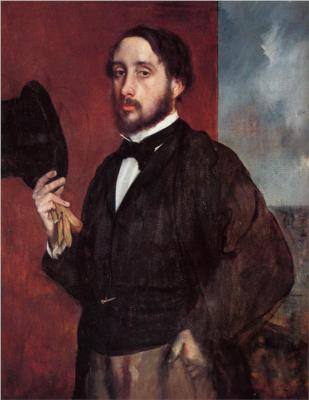
Edgar Degas (1834-1917)
Born: July 19, 1834; Paris, France
Died: September 27, 1917; Paris, France
Nationality: French
Art Movement: Impressionism, Realism
Edgar Degas' personal wealth gave him freedom to devote himself to art. He shunned formal training, preferring to study the Renaissance through frequent trips to Italy and - on his own doorstep - copying in the Louvre. There in 1862, he and Manet met in front of a Velazquez. Degas, who never ceased investigating every technical aspect of painting and drawing, had spent three years on the basics of light and colour. Degas exhibited with them right from the start in 1874, although he never wholly accepted their doctrines or techniques for himself. He only signed his works when he sold or exhibited them, thus controlling their number and value in the marketplace.
Why Buy a Museum Quality Degas Hand Painted Oil Painting Reproduction?
Showcase the beauty of Parisian life in your own home or office with the Impressionist and Realist paintings of Degas.
Direct Art Australia is the leading online art dealer in the country which offers museum quality Degas art reproduction and other replica paintings of famous artists. Unlike other art dealers, we only sell 100% hand painted oil paintings by professional artists and don't use machines to print them on canvas.
To ensure that the quality of our paintings is at par with your standards, we can also send you high-resolution images of the actual product. Aside from our reasonable rates, we also offer FREE shipping in all cities, regional towns, and outlying areas in Australia.
Check out our collection of Degas hand painted art reproductions below.
More About Degas
His subjects come from his own background, the high-born fraternity of the racecourse and opera house; ballet rehearsals attended as a privileged visitor; and the nudes seemingly observed, as he said himself, 'through the keyhole'. Degas was also captivated by Japanese prints, which inspired him to experiment with oblique and unusual perspectives.
Unfortunately, Degas' caustic wit lost him many friends and he came to a solitary old age. Yet, his biggest problem was always his failing eyesight. Perhaps that was why he took up photography at the age of 61, the camera being effectively a new pair of eyes. His expert venture into pastels was another attempt to work around the problem. But his last resort was to make small wax sculptures of dancers and horses: '...one sees no longer except in memory.'
He died in 1917 in Paris.


